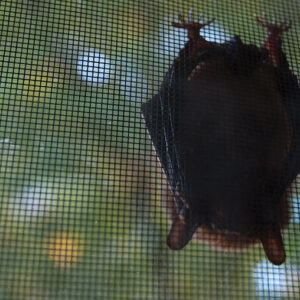
Protect Against Rabies by Avoiding Contact with Bats, Immunizing Pets
BatSmart materials offer rabies prevention tips, steps to take if potential contact with bat occurs
SPOKANE, Wash. – Each year, as the weather heats up in Spokane County and people and pets spend more time outdoors, the possibility for contact with potentially rabid bats increases. It is also a time of year when Spokane Regional Health District (SRHD) experiences an influx in calls from concerned citizens. It prompted officials this year to offer a new suite of prevention and education materials under the name BatSmart.
Central to BatSmart is an illustration of a backyard and associated steps homeowners can take to reduce interactions with bats. The related fact sheets include instructions to follow if potential contact with a bat occurs, as well as helping individuals to determine if they should contact their health care provider and/or the health district.
The release of BatSmart also coincides with the recent identification of two rabid bats in Spokane County—with one bat associated with two potential human exposures. Although bats are beneficial to people and the environment, due to bats’ potential to spread rabies, individuals are reminded to avoid contact with bats, and pet owners are encouraged to vaccinate their dogs and cats against the fatal disease.
“The individuals who potentially had contact with the bat are currently receiving vaccines for rabies,” said Dr. Bob Lutz, SRHD health officer. “Prompt administration of this treatment is highly effective in preventing rabies following exposure.”
In the case of the human exposures, the bat was found inside the house, where the two adults were potentially exposed. Washington State Public Health Laboratory (PHL) confirmed the bat positive for rabies. The other rabid bat was found outside the home on the homeowners’ porch. The health district recommended testing the bat when human exposure could not be ruled out.
The rabies virus is found in the saliva of a rabid animal. It is usually spread to humans by animal bites and can also be spread if the virus comes in contact with the eyes, nose, mouth, open cuts, or wounds. In Washington state, bats are the only carriers of rabies and rabid bats have been found in almost every county.
A bat bite or scratch may not be seen or felt due to the small size of a bat’s teeth and claws. People usually come in contact with a bat when it gets into a home through small openings or open windows, when they wake up to find a bat in their room, or when pets bring them into the home.
Four other rabid bats have been identified in Washington state in 2017. On average, PHL tests approximately 280 bats per year for rabies from Washington state—roughly 13 of them test positive. In 2016, 20 rabid bats were identified in the state, including three each in King, Spokane, and Chelan counties, two each in Lewis and Whatcom counties, and one each in Clark, Ferry, Grant, Kitsap, Mason, Pierce, and Thurston counties.
A potential rabies exposure should never be taken lightly. In 2015, a rabid bat bit a child in Spokane County, resulting in vaccination of both the child and mother. Again, if left untreated, rabies is almost always fatal. The last reported human cases of rabies in Washington state were in 1997 and 1995.
Continued Dr. Lutz, “Although most bats are harmless and do not carry rabies, people should never handle live or dead bats. To protect yourself and others, your safest bet is to simply presume that every bat is rabid.”
While it is estimated less than 1 percent of bats in the wild carry rabies, 3 percent to 10 percent of those tested are rabid. This is due to sick or injured bats being more likely to be tested. There is no need to test bats that have not come in to contact with people or pets.
If the health district determines an exposure to a human may have occurred, a bat should—with proper precautions and support from SRHD—be tested for rabies. Every year, SRHD’s Zoonotic Disease program sends an average of 25 bats to PHL for rabies testing.
For more information on rabies in Spokane County, go to srhd.org. Statewide information is available on the Washington State Department of Health website here, and national information on the U.S. Centers for Disease Prevention and Control web page located here. Become a fan of SRHD on Facebook to receive local safety and wellness tips. You can also follow SRHD on Twitter @spokanehealth.
